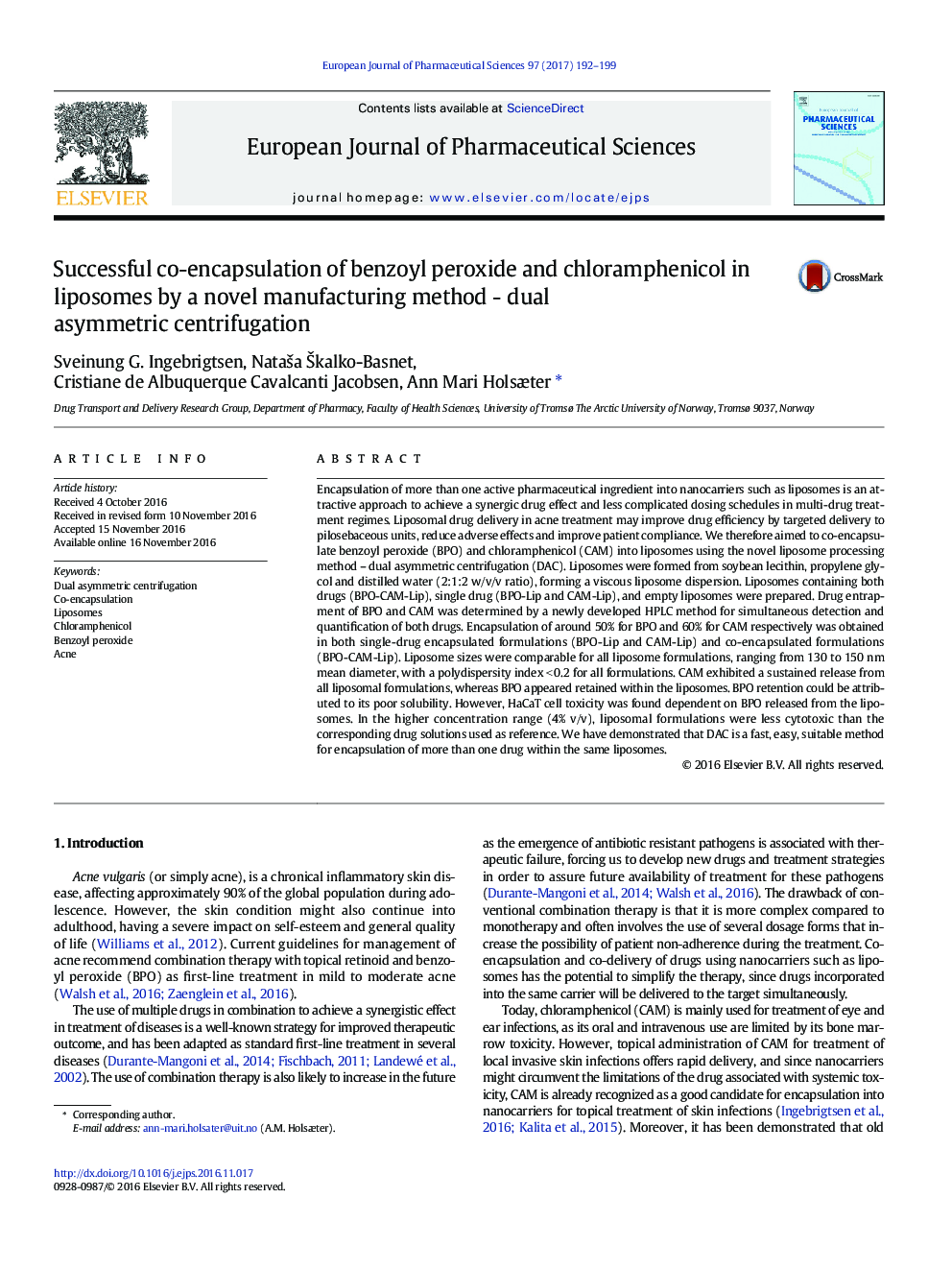| کد مقاله | کد نشریه | سال انتشار | مقاله انگلیسی | نسخه تمام متن |
|---|---|---|---|---|
| 5547990 | 1556153 | 2017 | 8 صفحه PDF | دانلود رایگان |
Encapsulation of more than one active pharmaceutical ingredient into nanocarriers such as liposomes is an attractive approach to achieve a synergic drug effect and less complicated dosing schedules in multi-drug treatment regimes. Liposomal drug delivery in acne treatment may improve drug efficiency by targeted delivery to pilosebaceous units, reduce adverse effects and improve patient compliance. We therefore aimed to co-encapsulate benzoyl peroxide (BPO) and chloramphenicol (CAM) into liposomes using the novel liposome processing method - dual asymmetric centrifugation (DAC). Liposomes were formed from soybean lecithin, propylene glycol and distilled water (2:1:2Â w/v/v ratio), forming a viscous liposome dispersion. Liposomes containing both drugs (BPO-CAM-Lip), single drug (BPO-Lip and CAM-Lip), and empty liposomes were prepared. Drug entrapment of BPO and CAM was determined by a newly developed HPLC method for simultaneous detection and quantification of both drugs. Encapsulation of around 50% for BPO and 60% for CAM respectively was obtained in both single-drug encapsulated formulations (BPO-Lip and CAM-Lip) and co-encapsulated formulations (BPO-CAM-Lip). Liposome sizes were comparable for all liposome formulations, ranging from 130 to 150Â nm mean diameter, with a polydispersity index <Â 0.2 for all formulations. CAM exhibited a sustained release from all liposomal formulations, whereas BPO appeared retained within the liposomes. BPO retention could be attributed to its poor solubility. However, HaCaT cell toxicity was found dependent on BPO released from the liposomes. In the higher concentration range (4%Â v/v), liposomal formulations were less cytotoxic than the corresponding drug solutions used as reference. We have demonstrated that DAC is a fast, easy, suitable method for encapsulation of more than one drug within the same liposomes.
162
Journal: European Journal of Pharmaceutical Sciences - Volume 97, 15 January 2017, Pages 192-199
